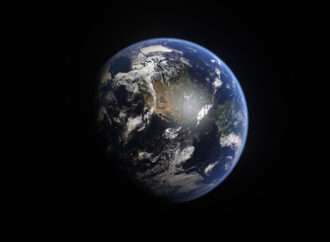Quantum physics, also known as quantum mechanics, is one of the most perplexing and mind-boggling branches of science. It challenges our intuitive understanding of the physical world and has given rise to countless debates and mysteries. From particles that can exist in multiple places at once to the bizarre phenomenon of entanglement, quantum physics is
Quantum physics, also known as quantum mechanics, is one of the most perplexing and mind-boggling branches of science. It challenges our intuitive understanding of the physical world and has given rise to countless debates and mysteries. From particles that can exist in multiple places at once to the bizarre phenomenon of entanglement, quantum physics is full of mind-bending concepts that continue to astound and confound scientists and enthusiasts alike. In this article, we will explore some of the most mind-boggling aspects of quantum physics that might just blow your mind.
What is Quantum Theory?
Quantum theory is known as quantum mechanics or quantum physics. It is a fundamental branch of physics that deals with the behavior of matter and energy at the smallest scales. It provides a theoretical framework for understanding the behavior of particles like electrons, photons, and atoms in a way that classical physics cannot.
This theory was developed in the early 20th century as a response to the limitations of classical physics. Classical physics could not explain certain phenomena observed at the atomic and subatomic levels.
Quantum Physics and Spirituality
Quantum physics and spirituality are two distinct areas of human understanding and inquiry. But they have occasionally been linked or discussed in certain contexts. It’s important to note that quantum physics is a well-established scientific theory with a strong empirical foundation. On the other hand, spirituality encompasses a wide range of beliefs, experiences, and practices. It often involves matters of faith, meaning, and the human spirit.
Mind Blowing Facts about Quantum Physics
1. Superposition: The Uncertainty Principle
One of the fundamental principles of quantum mechanics is the concept of superposition. This idea suggests that particles, such as electrons, can exist in multiple states simultaneously. For instance, an electron can be in a superposition of spinning both clockwise and counterclockwise at the same time. This concept challenges our classical understanding of particles having definite properties at all times.
Superposition becomes even more mind-boggling when we consider the famous Uncertainty Principle formulated by Werner Heisenberg. It states that the more precisely we know a particle’s position, the less precisely we can know its momentum, and vice versa. This inherent uncertainty at the quantum level makes it impossible to precisely predict both the position and momentum of a particle simultaneously. It’s as if the quantum world is intentionally keeping some of its secrets hidden from us.
2. Quantum Entanglement: Spooky Action at a Distance
Albert Einstein famously referred to quantum entanglement as “spooky action at a distance.” This phenomenon occurs when two particles become connected in such a way that the state of one particle instantaneously influences the state of the other, regardless of the distance separating them. This connection seems to defy the limitations imposed by the speed of light. Also it suggests that information is transmitted faster than light.
Quantum entanglement has been experimentally confirmed numerous times and remains one of the most baffling aspects of quantum physics. While we can’t use it for faster-than-light communication or teleportation, its existence challenges our understanding of the fundamental principles of causality and locality.
3. Schrödinger’s Cat: A Paradoxical Puzzler
Erwin Schrödinger’s famous thought experiment involving a cat inside a sealed box is a paradoxical puzzle that illustrates the strange nature of quantum superposition. In this scenario, a cat is placed in a box with a radioactive atom, a Geiger counter, and a vial of poison. If no radiation is detected, the cat remains alive. But if the counter detects radiation then the cat is killed.
According to quantum mechanics, until we open the box and observe the system, the cat is in a superposition of being both alive and dead simultaneously. It’s only when we observe the cat that its state collapses into either being alive or dead. This paradox raises profound questions about the role of the observer in quantum events and challenges our intuitive understanding of reality.
4. Quantum Tunneling: Crossing Impossible Barriers
In classical physics, if an object does not possess enough energy to overcome a potential barrier, it cannot pass through it. However, in the quantum world, particles can seemingly “tunnel” through barriers that would be insurmountable in classical physics. This phenomenon, known as quantum tunneling, has practical applications in various fields, including electronics and nuclear physics.
Quantum tunneling occurs because particles do not have definite positions. Also, there is always some probability of finding them on the other side of a barrier. This concept allows electrons to escape from the confines of atoms and conduct electricity. The fact that particles can penetrate barriers that should be impenetrable in the classical world challenges our understanding of physical limitations.
5. Wave-Particle Duality: Particles as Waves and Vice Versa
One of the most baffling aspects of quantum physics is the concept of wave-particle duality. It suggests that particles like electrons and photons exhibit both wave-like and particle-like behaviors depending on how they are observed. When we observe them as particles, they behave like discrete entities with definite positions. However, when we observe them as waves, they exhibit interference patterns and diffraction, as if they were spread out over space.
This duality challenges our classical intuition, where an object is either a particle or a wave but not both simultaneously. Wave-particle duality is a fundamental aspect of quantum physics and underscores the mysterious nature of quantum entities.
6. Quantum Teleportation: Beaming Matter Across Space
Quantum teleportation might bring to mind science fiction scenarios of instant transportation. But it’s not quite like what you’ve seen in movies. However, it’s still a mind-boggling concept. Quantum teleportation involves the transfer of the quantum state of one particle to another, often separated by great distances. Basically, the process is dependent on the phenomena of quantum entanglement.
When two particles are entangled, the measurement of one instantly affects the other, regardless of the separation. Scientists can exploit this property to transmit quantum information from one location to another without physically moving the particles themselves. While it’s not teleporting physical matter, it’s a fascinating application of quantum mechanics that challenges our understanding of information transfer..
7. The Many-Worlds Interpretation: Parallel Universes
The Many-Worlds Interpretation (MWI) is a controversial and mind-boggling interpretation of quantum mechanics proposed by physicist Hugh Everett III. According to MWI, every quantum event results in the branching of the universe into multiple parallel realities. In other words, every time a quantum particle makes a choice, it takes all possible paths, leading to a multitude of parallel universes.
This interpretation implies that there are countless universes where every possible outcome of quantum events has occurred. While MWI remains a topic of debate among physicists, it offers a fascinating perspective on the quantum world’s vast potential and challenges our perception of reality itself.
Quantum Physics Reality is an Illusion
The statement “quantum physics suggests reality is an illusion” is a complex and often misinterpreted idea. In quantum physics, there are several aspects that challenge our classical understanding of reality. For example: wave particle duality, superposition, uncertainty principle, quantum entanglement.
These aspects of quantum physics are indeed counterintuitive and challenge classical notions of reality. Thus, it is crucial to clarify that quantum physics does not suggest that reality is an “illusion”.

Rather, quantum physics provides a more nuanced and complex view of reality. It suggests that the classical, everyday reality we perceive is an approximation—a simplified and limited description of a more intricate quantum reality. The classical world emerges from the quantum world through a process called decoherence, where the quantum probabilities of various states “collapse” into classical outcomes when measured or observed.
In essence, quantum physics doesn’t dismiss the reality we experience but rather deepens our understanding of it. It shows that our classical intuition is an approximation of a more complex and probabilistic reality at the quantum level. While quantum phenomena challenge our intuition, they are a fundamental part of the natural world. Also, they have been confirmed through numerous experiments.
So, while quantum physics does introduce perplexing and counterintuitive aspects of reality, it does not conclude that reality itself is an “illusion.” Instead, it prompts us to rethink and expand our understanding of what reality truly means at the quantum level.
Conclusion
Quantum physics is undoubtedly one of the most mind-boggling and fascinating branches of science. Its strange and counterintuitive principles, such as superposition, quantum entanglement, Schrödinger’s cat, and wave-particle duality, continue to astound and perplex scientists and enthusiasts alike. Concepts like quantum tunneling, quantum teleportation, and the Many-Worlds Interpretation further push the boundaries of our understanding of the universe.
As we delve deeper into the quantum realm, we are confronted with a reality that defies classical intuition and challenges our most fundamental assumptions about the nature of the physical world. Quantum physics not only opens up new avenues for scientific exploration but also invites us to reconsider the nature of reality itself. It is a testament to the inexhaustible mysteries that the universe has to offer, and as we continue to unravel its secrets, we can only expect more mind-boggling revelations in the future.




























Leave a Comment
Your email address will not be published. Required fields are marked with *